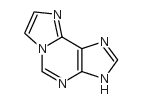Inhibition of DNA replication fork progression and mutagenic potential of 1, N6-ethenoadenine and 8-oxoguanine in human cell extracts.
Joel H Tolentino, Tom J Burke, Suparna Mukhopadhyay, W Glenn McGregor, Ashis K Basu
文献索引:Nucleic Acids Res. 36(4) , 1300-8, (2008)
全文:HTML全文
摘要
Comparative mutagenesis of 1,N(6)-ethenoadenine (epsilonA) and 8-oxoguanine (8-oxoG), two endogenous DNA lesions that are also formed by exogenous DNA damaging agents, have been evaluated in HeLa and xeroderma pigmentosum variant (XPV) cell extracts. Two-dimensional gel electrophoresis of the duplex M13mp2SV vector containing these lesions established that there was significant inhibition of replication fork movement past epsilonA, whereas 8-oxoG caused only minor stalling of fork progression. In extracts of HeLa cells, epsilonA was weakly mutagenic inducing all three base substitutions in approximately equal frequency, whereas 8-oxoG was 10-fold more mutagenic inducing primarily G-->T transversions. These data suggest that 8-oxoG is a miscoding lesion that presents a minimal, if any, block to DNA replication in human cells. We hypothesized that bypass of epsilonA proceeded principally by an error-free mechanism in which the undamaged strand was used as a template, since this lesion strongly blocked fork progression. To examine this, we determined the sequence of replication products derived from templates in which a G was placed across from the epsilonA. Consistent with our hypothesis, 93% of the progeny were derived from replication of the undamaged strand. When translesion synthesis occurred, epsilonA-->T mutations increased 3-fold in products derived from the mismatched epsilonA: G construct compared with those derived from the epsilonA: T construct. More efficient repair of epsilonA in the epsilonA: T construct may have been responsible for lower mutation frequency. Primer extension studies with purified pol eta have shown that this polymerase is highly error-prone when bypassing epsilonA. To examine if pol eta is the primary mutagenic translesion polymerase in human cells, we determined the lesion bypass characteristics of extracts derived from XPV cells, which lack this polymerase. The epsilonA: T construct induced epsilonA-->G and epsilonA-->C mutant frequencies that were approximately the same as those observed using the HeLa extracts. However, epsilonA-->T events were increased 5-fold relative to HeLa extracts. These data support a model in which pol eta-mediated translesion synthesis past this adduct is error-free in the context of semiconservative replication in the presence of fidelity factors such as PCNA.
相关化合物
| 结构式 | 名称/CAS号 | 分子式 | 全部文献 |
|---|---|---|---|
 |
1,N⁶-乙基腺嘌呤
CAS:13875-63-3 |
C7H5N5 |
|
Measurement of urinary excretion of 5-hydroxymethyluracil in...
2005-03-15 [Toxicol. Lett. 155(3) , 403-10, (2005)] |
|
Highly mutagenic exocyclic DNA adducts are substrates for th...
2012-01-01 [PLoS ONE 7(12) , e51776, (2012)] |
|
Magnesium, essential for base excision repair enzymes, inhib...
2006-10-06 [J. Biol. Chem. 281(40) , 29525-32, (2006)] |
|
Modeling the chemical step utilized by human alkyladenine DN...
2011-10-12 [J. Am. Chem. Soc. 133(40) , 16258-69, (2011)] |
|
Structural insights by molecular dynamics simulations into d...
2002-09-01 [Nucleic Acids Res. 30(17) , 3778-87, (2002)] |